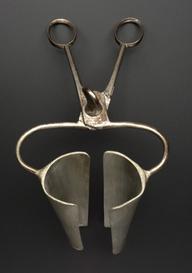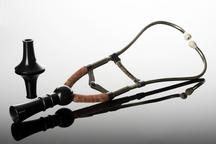

Booklet 'Taking Cervical Smears' published by the British Society for Clinical Cytology, 1989
- Made:
- 1989 in unknown place

Booklet 'Taking Cervical Smears' published by the British Society for Clinical Cytology, 1989
Sometimes known as a Pap smear, after its developer by Dr Georges Papanicolaou (1833-1962), cervical screening has been available in England since the 1960s. Originally, samples were taken with a wood spatula and the sample smeared onto a glass slide which was then sent to the lab for examination. Since 2008, liquid based cytology tests have been used in the United Kingdom to carry out a cervical screening test. Cells are removed from a person’s cervix using a special brush which is then rinsed into a small container of liquid and sent off with the brush head to a laboratory. Here the sample is added to a glass slide and examined.
From 1989, a year after centralised screening was introduced The British Society for Clinical Cytology offered an examination for people working in laboratories looking at slides and identifying samples that need further investigation. It consisted of a written paper, a practical screening test, a spot test and a short oral test. Cytology is the exam of individual cells or small clusters of cells.
The British Association for Cytopathology (BAC) was formed in 2011 by the merger of the BSCC (British Society for Clinical Cytology) and the NAC (National Association of Cytologists).
Details
- Category:
- Clinical Diagnosis
- Object Number:
- 2019-30
- Materials:
- paper (fibre product)
- type:
- booklet
- credit:
- Gift of London Regional Cytology Training Centre




